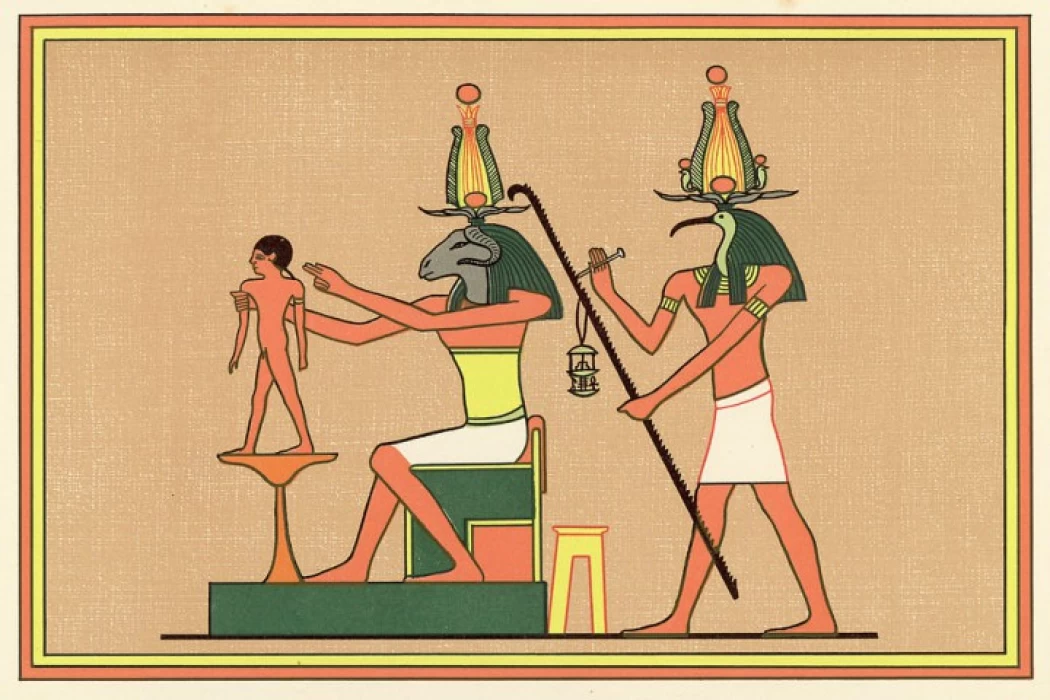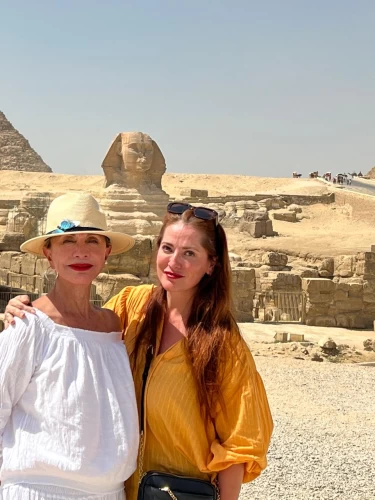
God Khnum | God of the Waters
God Khnum
This deity was known as the god of the waters that circulated in the lower world, in this way, when the sun was shipwrecked in the darkness of the night, Khnum unconsciously joined it.
Among the most outstanding functions of this god in Egyptian religion, is that of creating living beings, men, and gods thanks to his potter's wheel, a place from which many claimed that the primordial egg had been born.
It is worth mentioning that with the pottery function, with which he created people at the same time as his Ka, he was given the name "The father of fathers and mother of mothers" in such a way that Khnum means literally "the modeler".
In the same way, the oldest legends tell, that at the beginning of time, Khnum was dedicated to creating each man and each woman separately, but one day, Khnum woke up tired of doing this task, so without thinking he broke his lathe potter, thus introducing a different part of it in each woman, so each of them was given the role of giving birth to the next generations.
God of the Waters
Khnum is represented with a ram on his head, his man head, an Atef crown, carried an Ankh-sign scepter, so this god is part of the Esna triad, with Satis.
Would you like to experience a journey through ancient Egyptian culture and mythology? you can make it happen and spend a day visiting Abydos, Giza, Luxor, Aswan to see the tombs of the pharaohs adorned with very clear, detailed and beautifully painted scenes of the various deities of ancient Egypt, as well as many other sites, cities, adventures and things to do in Cairo, you can try to book one of our Egypt tours and Egypt travel packages many private groups of guided day tours in Cairo from the airport and day tours in Egypt to explore the capital of Egypt, Cairo you can check out many of the Egypt itineraries or take one of our full day tours in Cairo like
God Khnum
This deity was known as the god of the waters that circulated in the lower world, in this way, when the sun was shipwrecked in the darkness of the night, Khnum unconsciously joined it.
The ram god, whose name is derived from the verb "khnem" meaning "to create," indicating that he was a creator from the beginning. Perhaps because of his creative ability, and because the phonetic connotation of the ram (bA) matches the word "ba" (meaning: spirit), he was referred to by the title (bA Ra).
Among the most outstanding functions of this god in Egyptian religion, is that of creating living beings, men, and gods thanks to his potter's wheel, a place from which many claimed that the primordial egg had been born.
It is worth mentioning that with the pottery function, with which he created people at the same time as his Ka, he was given the name "The father of fathers and mother of mothers" in such a way that Khnum means literally "the modeler".
In the same way, the oldest legends tell, that at the beginning of time, Khnum was dedicated to creating each man and each woman separately, but one day, Khnum woke up tired of doing this task, so without thinking he broke his lathe potter, thus introducing a different part of it in each woman, so each of them was given the role of giving birth to the next generations.
His Association with Other Deities. He was associated with the goddesses Menhet and Neith at the temple of Esna.
Khnum, along with the goddesses Satet and Anqet, formed the First Cataract triad at Elephantine. He was also united at Elephantine with the gods Shu and Horus. On the other hand, the Greeks equated him with the god Amun at Thebes, perhaps because both were associated with the ram.
Elephantine Island and the region surrounding the Aswan Falls were thought to be protected by Khnum. "Lord of the Falls" was another name for him in the Old Kingdom. During the New Kingdom, he and his wife, Satis, and their daughter, Anukis, formed what is known as the "Elephantine Triad." He was worshipped in many areas of Upper Egypt and Nubia, but his worship declined in northern Egypt and the Delta. Among his most important worship sites were Elephantine Island, Philae, Esna, Edfu, Asyut, Kom Ombo, and Mendes. Since the First Dynasty, the belief in sacred rams has been known.
Esna Temple
His temple at Esna is his best-preserved temple, and its texts provide us with a wealth of information about this deity and his worship.
The Greco-Roman Temple of Khnum in Esna was built during the reign of the Roman Emperor Claudius and dedicated to the worship of the ram-headed creator god. All that remains of the temple is the hall, whose ceiling rests on columns. The ceiling, supported by 24 columns, is decorated with images depicting rural scenes and hymns to the god Khnum. This temple was discovered in the 1840s. You can see the carved plant motifs and images of Roman celestial beings, along with hieroglyphic inscriptions representing the rituals performed at the temple.















